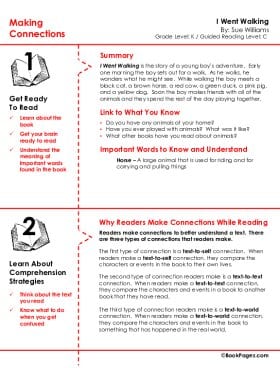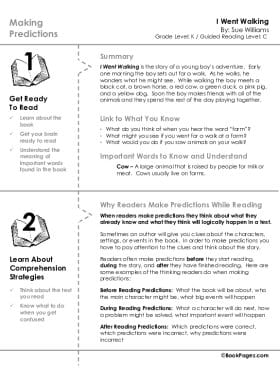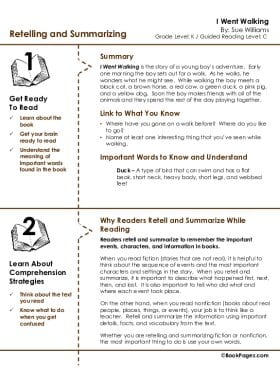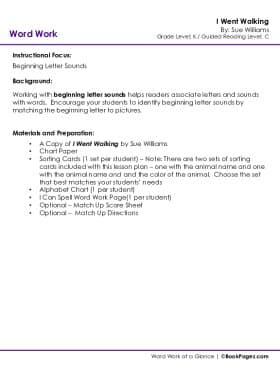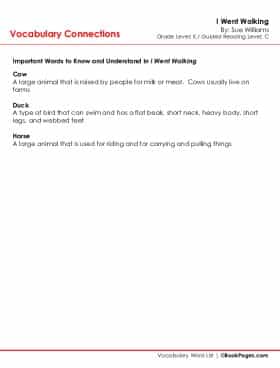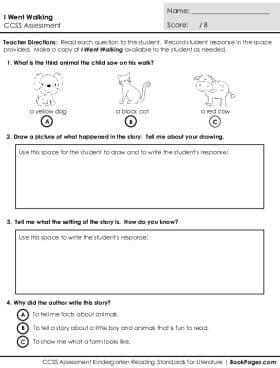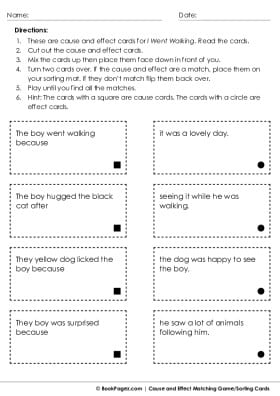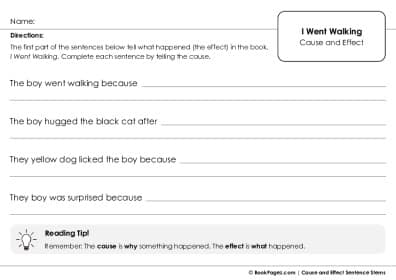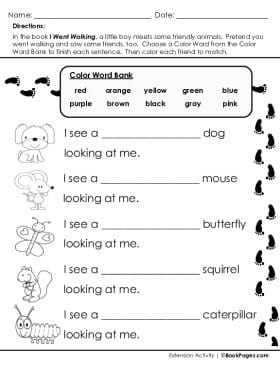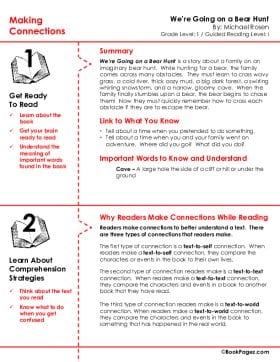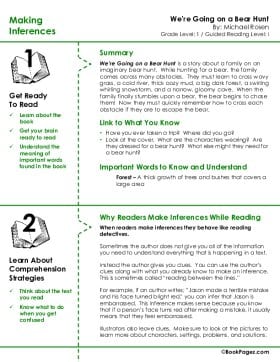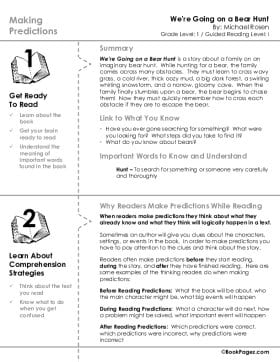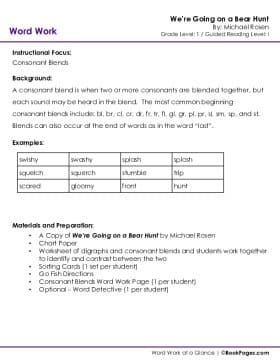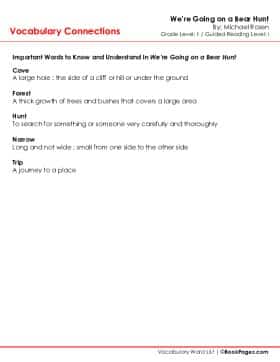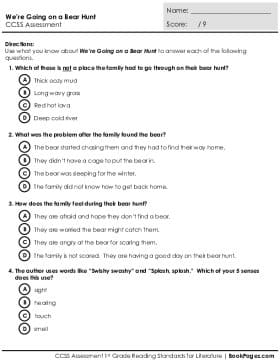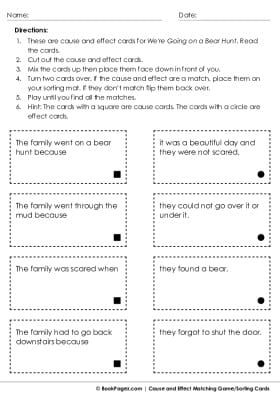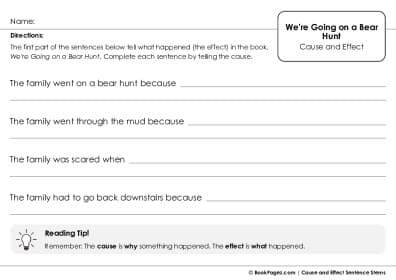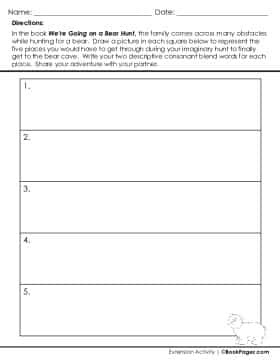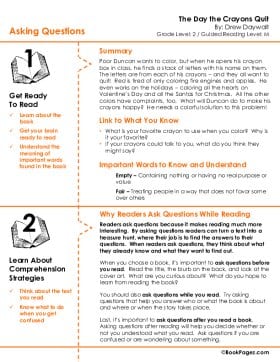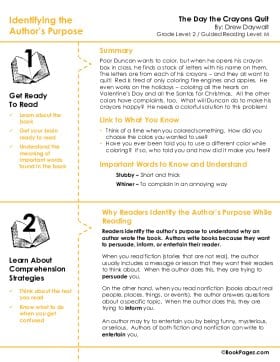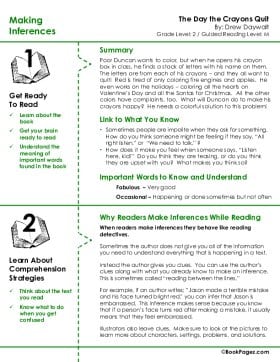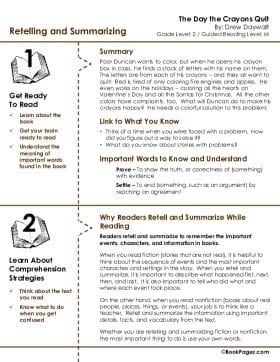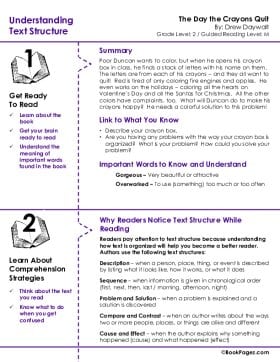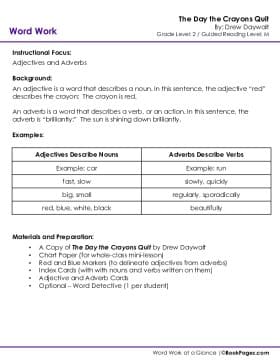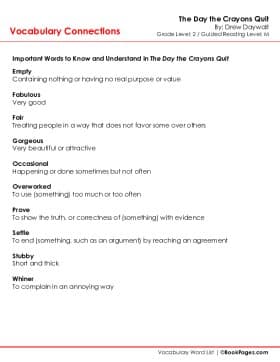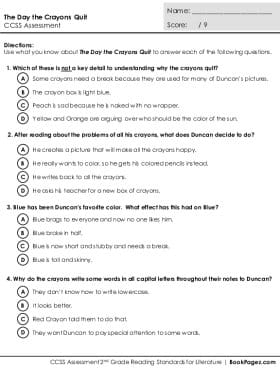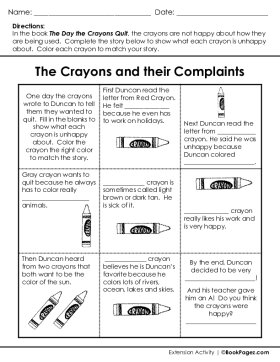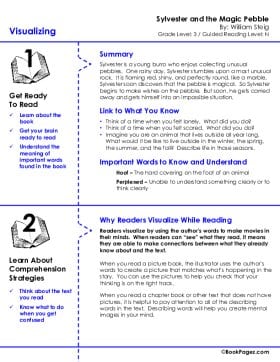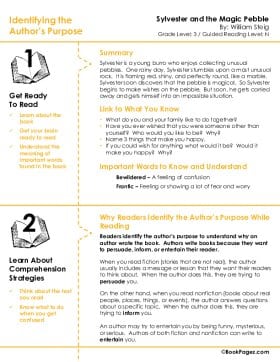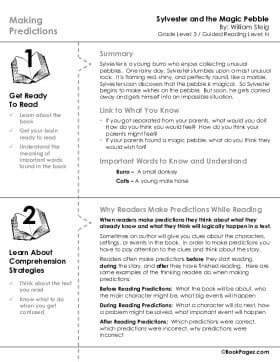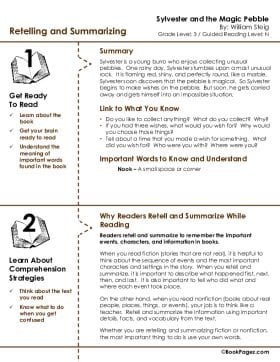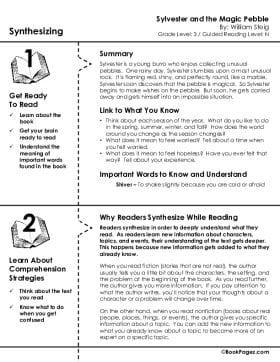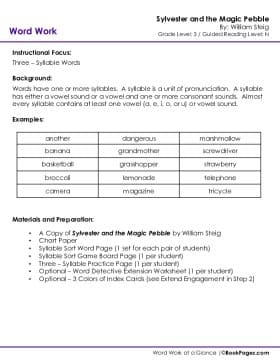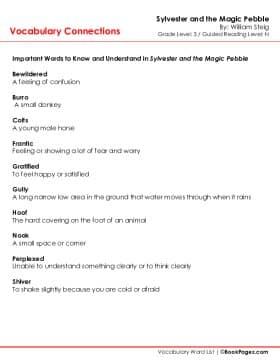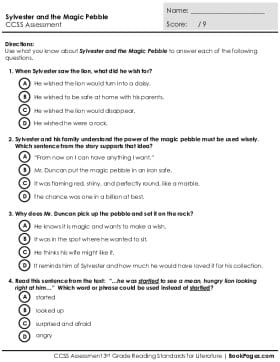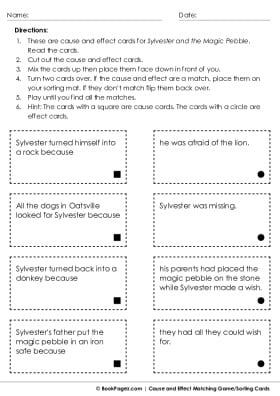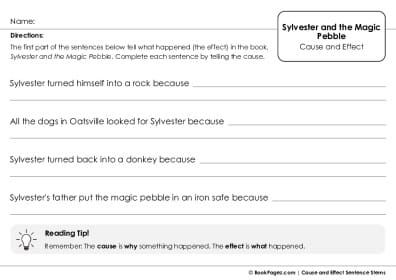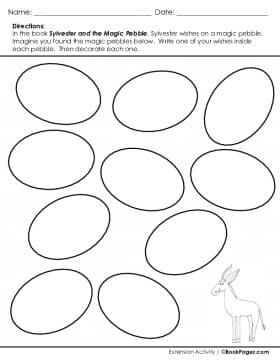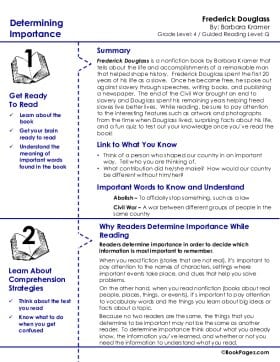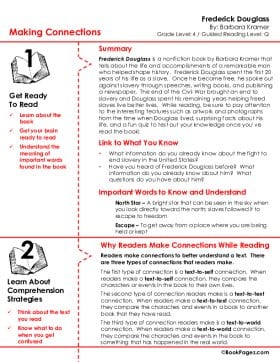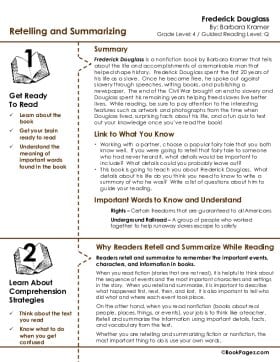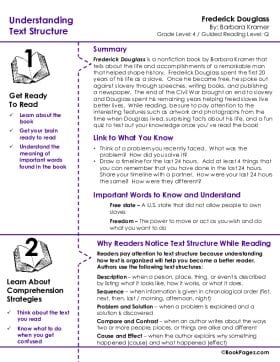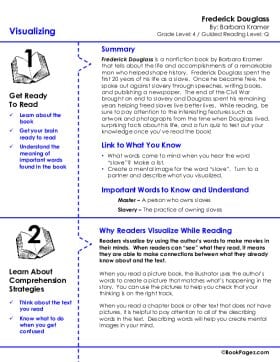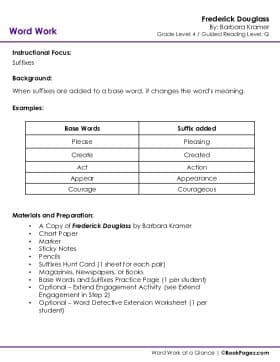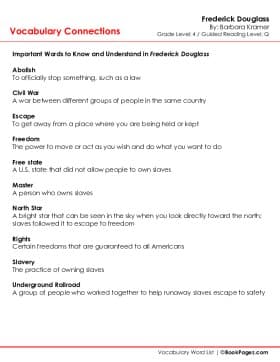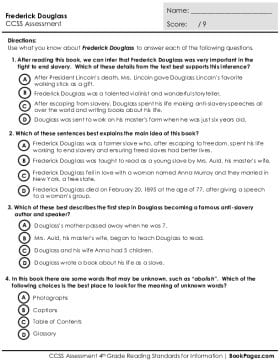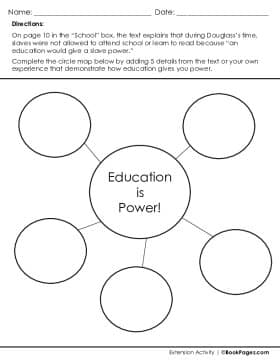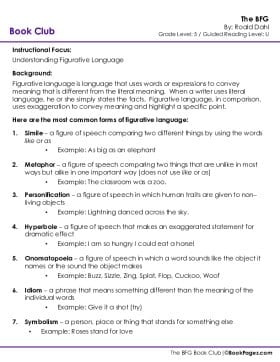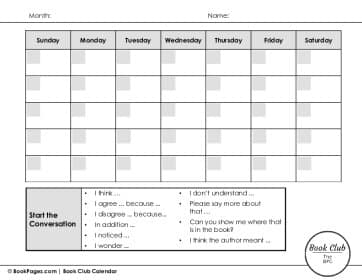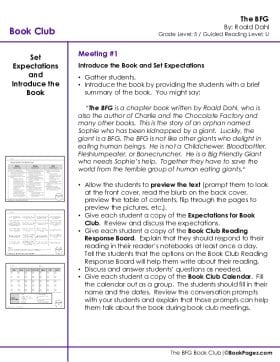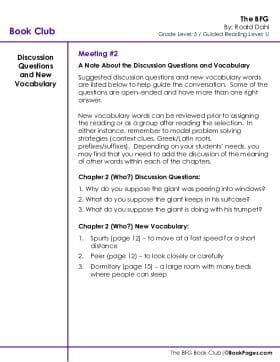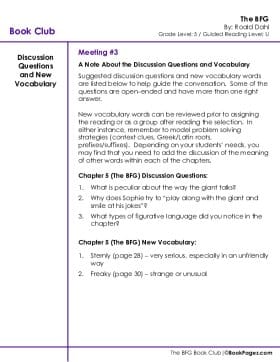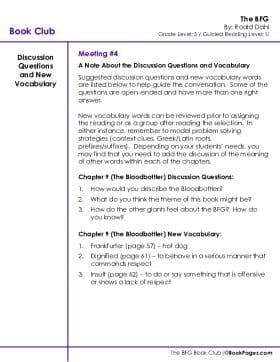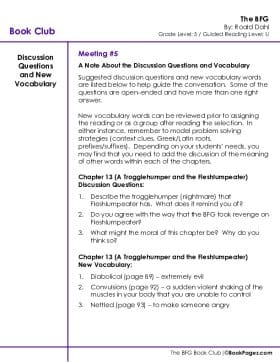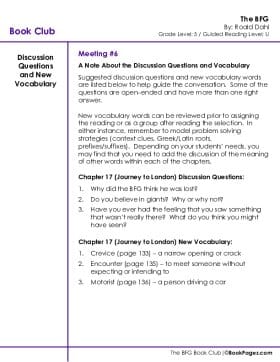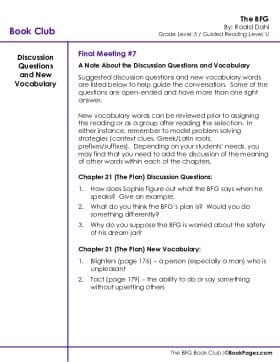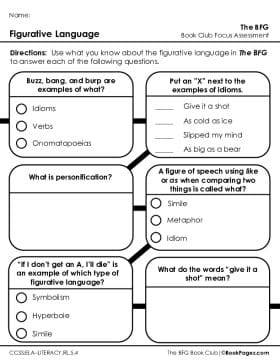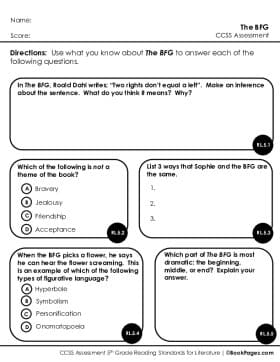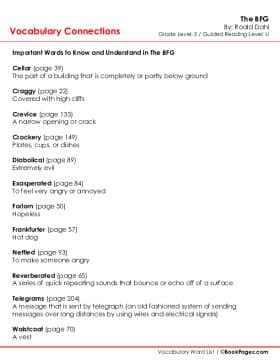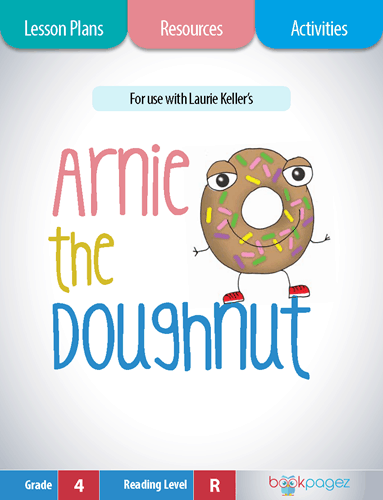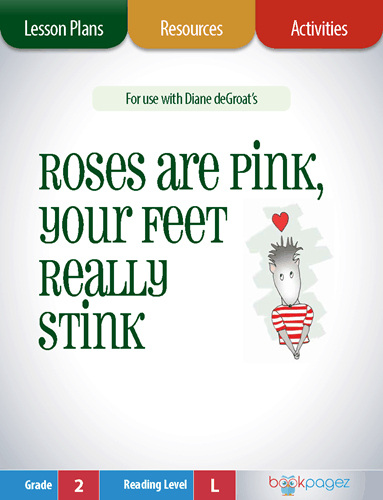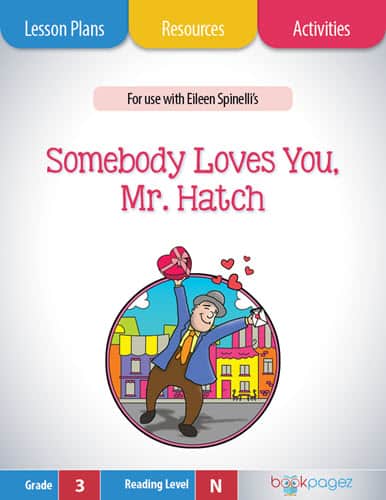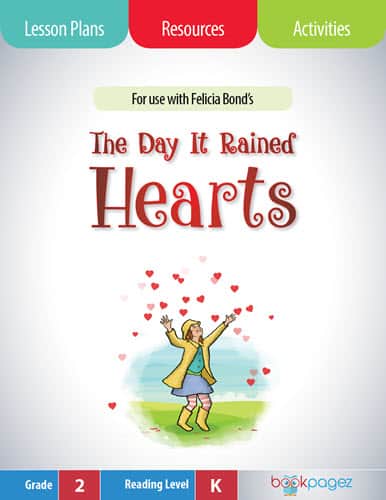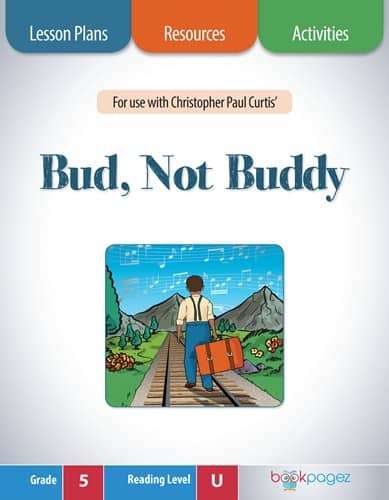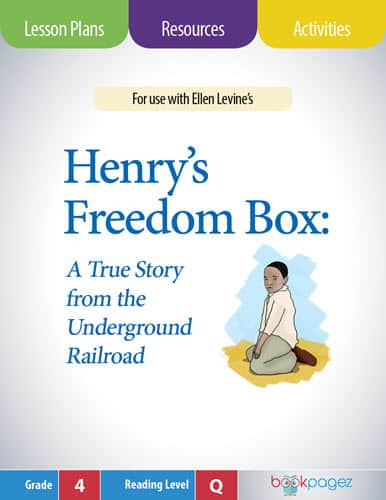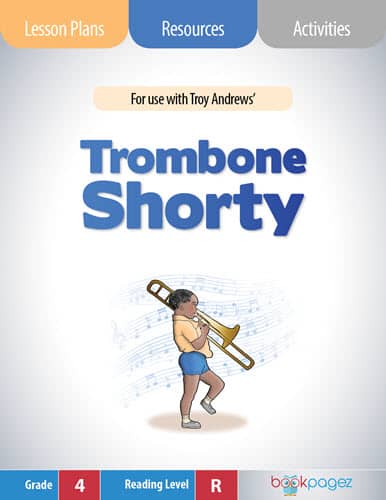Get your exclusive discount today!
Welcome to the Free Sample Club!
Your Starter Set includes six complete resource sets, an instructional overview, and a sample 5-day plan. These resources will never expire, so feel free to explore them at your own pace. Then, be sure to check out this month's freebies - we hope you and your students enjoy the resources!
Read the Teacher Guides and watch the included resource videos to learn more about the resources and how to make the most of your freebies.
Kindergarten Starter Set:
Lesson Plans, Activities, and Assessments for I Went Walking by Sue Williams
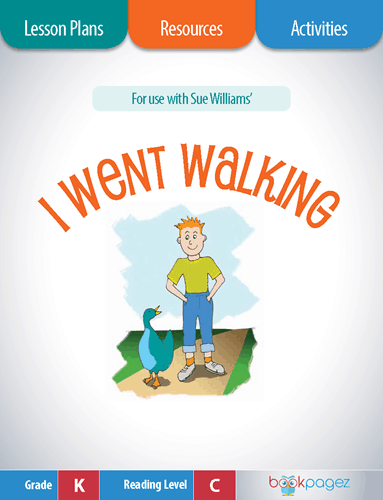
Kindergarten Starter Set:
Lesson Plans, Activities, and Assessments for I Went Walking by Sue Williams
I Went Walking is a simple story perfect for practicing retelling and summarizing, making connections, and making predictions with beginner readers. As the main character sets out on a walking adventure, readers will easily follow along with the story’s sequence while they anticipate what animals the young boy will see next on his walk.
Making Connections with I Went Walking
This book is a good choice for readers who are learning to make connections while reading. Beginner readers should be able to make text-to-self connections between the book and their own experiences on nature walks or trips to a petting farm or zoo. Readers should also be able to make text-to-text connections with other books they’ve read that follow the same rhythmic text structure.
Common Core Alignment:
L.K.6 RF.K.3 RF.K.4 RL.K.1 RL.K.10 RL.K.5 RL.K.9 SL.K.1b SL.K.2 SL.K.3 SL.K.4 SL.K.5 W.K.8
TEKS Alignment:
K.12A K.12D K.12E K.1A K.1C K.1D K.5A K.5E K.5I K.6A K.6B K.6C K.6D K.6E K.6F K.7B K.7C K.8C K.9E
Making Predictions with I Went Walking
This book and lesson plan will support readers who are learning to make predictions while reading. The illustrator has cleverly drawn half of each animal before it appears on the next page, allowing readers to anticipate what will appear on the following page and then immediately validate their predictions.
Common Core Alignment:
L.K.6 RF.K.3 RF.K.4 RL.K.1 RL.K.10 RL.K.4 RL.K.7 SL.K.1b SL.K.2 SL.K.3 SL.K.4 SL.K.5 W.K.8
TEKS Alignment:
K.12D K.12E K.1A K.1C K.1D K.5A K.5C K.5E K.5I K.6B K.6C K.6D K.6E K.6F K.7B K.7C K.8C K.9B K.9C K.9E
Retelling and Summarizing with I Went Walking
This is an ideal book for introducing early readers to the process of retelling and summarizing. The familiar, repetitive text allows readers to focus on the animals and colors, while the simple story pattern makes it easy to identify and retell key events.
Common Core Alignment:
L.K.6 RF.K.3 RF.K.4 RL.K.10 RL.K.2 RL.K.3 RL.K.7 SL.K.1b SL.K.2 SL.K.3 SL.K.4 SL.K.5 W.K.8
TEKS Alignment:
K.12D K.12E K.1A K.1C K.1D K.5A K.5G K.5I K.6B K.6C K.6D K.6E K.6F K.7A K.7B K.7C K.7D K.8C K.9E
Phonics and Word Work Resources for I Went Walking
This word work lesson plan and set of teaching resources use I Went Walking by Sue Williams as a springboard for instruction focused on consonants.
By anchoring word study to the text, students will benefit from seeing how beginning consonants are used inside of the text before engaging in both guided and independent practice with words.
By anchoring word study to the text, students will benefit from seeing how beginning consonants are used inside of the text before engaging in both guided and independent practice with words.
Common Core Alignment:
RF.K.3 RF.K.4
TEKS Alignment:
K.2A(ii) K.2B(i)
Vocabulary Resources for I Went Walking
This set of vocabulary development resources for I Went Walking highlights the words that are most important for students to know and understand while reading the book.
Through engaging in fun word games, matching words to definitions and pictures, and practicing how to categorize words, students will develop the vocabulary necessary to comprehend this story and many others.
Through engaging in fun word games, matching words to definitions and pictures, and practicing how to categorize words, students will develop the vocabulary necessary to comprehend this story and many others.
Common Core Alignment:
L.K.5.a L.K.6
TEKS Alignment:
K.3A K.3B K.3C K.6F
Cause and Effect Matching Game for I Went Walking
Read I Went Walking then have some fun matching cause and effect sentences from the book. By using these cause and effect cards, students will demonstrate both their comprehension of the text and their understanding of cause and effect relationships in a hands-on and interactive way.
This resource includes matching/sorting cards and a sorting mat for four cause and effect sentences in I Went Walking. Each cause card is marked with a square and each effect card is marked with a circle, making it easy to support students who struggle with matching cause and effect relationships.
This resource includes matching/sorting cards and a sorting mat for four cause and effect sentences in I Went Walking. Each cause card is marked with a square and each effect card is marked with a circle, making it easy to support students who struggle with matching cause and effect relationships.
Cause and Effect Sentence Stems for I Went Walking
Understanding cause and effect is a key comprehension and language skill. The text structure of I Went Walking includes several examples of cause and effect relationships, making it easy to use as a springboard for modeling or independent practice.
This simple resource includes four sentence stems. Each sentence stem presents an effect. Students will use what they know about the book to fill in the cause of the effect.
This simple resource includes four sentence stems. Each sentence stem presents an effect. Students will use what they know about the book to fill in the cause of the effect.
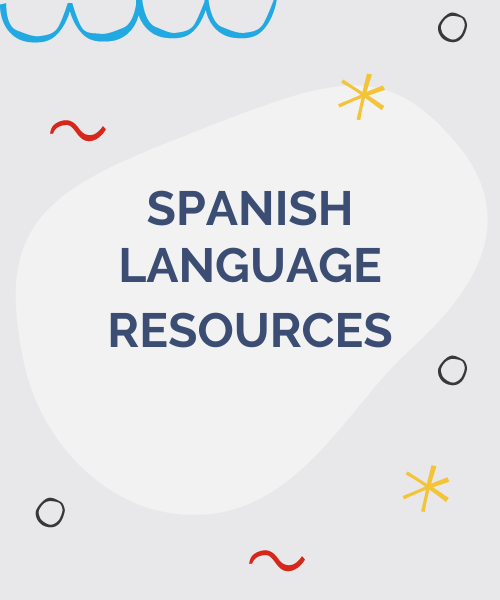
Spanish Language Resources for I Went Walking
The following PDF resoruces are available in Spanish.
First Grade Starter Set:
Lesson Plans, Activities, and Assessments for We're Going on a Bear Hunt by Michael Rosen
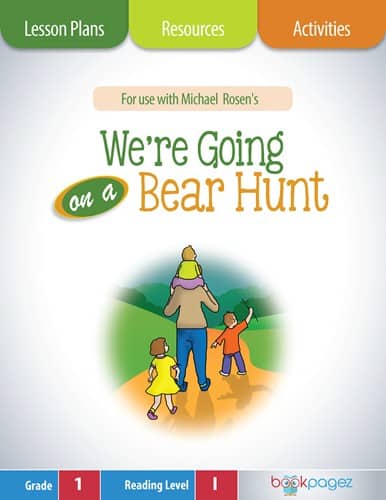
First Grade Starter Set:
Lesson Plans, Activities, and Assessments for We're Going on a Bear Hunt by Michael Rosen
We’re Going on a Bear Hunt is the story of a family who bravely splashes through a river, squelches through the mud, and stumbles through the forest on their quest to catch a big bear. Students will enjoy learning how to use comprehension strategies to fully engage with this fast-paced story of imaginary adventure.
Making Connections with We're Going on a Bear Hunt
We're going on a Bear Hunt offers beginning readers opportunities to practice making text-to-text, text-to-self, and text-to-world connections while reading. Help students understand the difference between the three types of connections with the included page by page strategy guide.
Common Core Alignment:
L.1.6 RF.1.1 RF.1.2 RL.1.1 RL.1.10 RL.1.4 RL.1.7 RL.1.9 SL.1.1b SL.1.2 SL.1.3 SL.1.5 W.1.5 W.1.8
TEKS Alignment:
1.10E 1.13A 1.13D 1.13E 1.1A 1.1C 1.1D 1.6A 1.6E 1.6I 1.7A 1.7B 1.7C 1.7D 1.7E 1.7F 1.8B 1.8C
Making Inferences with We're Going on a Bear Hunt
This is an ideal book for readers who are learning to make inferences. With its beautiful drawings and clear story line, readers will easily make inferences about the hidden story behind the family's extraordinary bear hunting adventure.
Common Core Alignment:
L.1.6 RF.1.1 RF.1.2 RL.1.1 RL.1.10 RL.1.7 RL.1.9 SL.1.1b SL.1.2 SL.1.3 W.1.5 W.1.8
TEKS Alignment:
1.10E 1.13D 1.13E 1.1A 1.1C 1.1D 1.6A 1.6E 1.6F 1.6I 1.7B 1.7C 1.7D 1.7E 1.7F 1.8B 1.8C 1.9C
Making Predictions with We're Going on a Bear Hunt
We're Going on a Bear Hunt is a smart choice for students who are beginning to make predictions while reading. With a clear set of events and predictable storyline, readers will enjoy using their prior knowledge and understanding of story elements to make predictions about the family's bear hunt.
Common Core Alignment:
L.1.6 RF.1.1 RF.1.2 RL.1.1 RL.1.10 RL.1.9 SL.1.1b SL.1.2 SL.1.3 W.1.5 W.1.8
TEKS Alignment:
1.10B 1.10C 1.10E 1.13D 1.13E 1.1A 1.1C 1.1D 1.6A 1.6C 1.6E 1.6I 1.7B 1.7C 1.7D 1.7E 1.7F 1.8B 1.8C 1.9C
Retelling and Summarizing with We're Going on a Bear Hunt
Retelling and summarizing is a key skill for early readers to master. We're Going on a Bear Hunt offers students plenty of opportunity to practice retelling important information about the text. With its limited cast of characters and distinct problem and solution, students will feel confident in their ability to retell the story.
Common Core Alignment:
L.1.6 RF.1.1 RF.1.2 RL.1.1 RL.1.10 RL.1.2 RL.1.3 RL.1.7 SL.1.1b SL.1.2 SL.1.3 SL.1.5 W.1.5 W.1.8
TEKS Alignment:
1.10A 1.10E 1.13D 1.13E 1.1A 1.1C 1.1D 1.6A 1.6G 1.6I 1.7B 1.7C 1.7D 1.7E 1.7F 1.8A 1.8B 1.8C 1.8D 1.9C
Synthesizing with We're Going on a Bear Hunt
We're Going on a Bear Hunt provides readers with the opportunity to compare and contrast the beginning of the story with the end of the story. As a result, this book is a perfect springboard to use when introducing the concept of synthesizing while reading. Help students track the characters throughout the text by focusing on the way the characters behave when setting out on their bear hunt all the way to the end of their adventure.
Common Core Alignment:
Common Core Alignment:
L.1.6 RF.1.1 RF.1.2 RL.1.1 RL.1.10 RL.1.2 RL.1.3 RL.1.4 RL.1.6 RL.1.7 SL.1.1b SL.1.2 SL.1.3 W.1.5 W.1.8
L.1.6 RF.1.1 RF.1.2 RL.1.1 RL.1.10 RL.1.2 RL.1.3 RL.1.4 RL.1.6 RL.1.7 SL.1.1b SL.1.2 SL.1.3 W.1.5 W.1.8
TEKS Alignment:
1.13D 1.13E 1.1A 1.1C 1.1D 1.6A 1.6B 1.6E 1.6F 1.6G 1.6H 1.6I 1.7A 1.7B 1.7C 1.7D 1.7E 1.7F 1.8A 1.8B 1.8C 1.9C
Phonics and Word Work Resources for We're Going on a Bear Hunt
This word work lesson plan and set of teaching resources use We're Going on a Bear Hunt by Michael Rosen as a springboard for instruction focused on consonant blends.
By anchoring word study to the text, students will benefit from seeing how beginning consonants are used inside of the text before engaging in both guided and independent practice with words.
By anchoring word study to the text, students will benefit from seeing how beginning consonants are used inside of the text before engaging in both guided and independent practice with words.
Common Core Alignment:
RF.1.3 RF.1.4
TEKS Alignment:
1.2A(ii) 1.2A(v) 1.2A(vi) 1.2A(vii) 1.2B(i) 1.2B(ii) 1.2B(iii) 1.2C(i) 1.2C(ii) 1.2C(iii)
Vocabulary Resources for We're Going on a Bear Hunt
This set of vocabulary development resources for We're Going on a Bear Hunt highlights the words that are most important for students to know and understand while reading the book.
Through engaging in fun word games, matching words to definitions and pictures, and practicing how to categorize words, students will develop the vocabulary necessary to comprehend this story and many others.
Through engaging in fun word games, matching words to definitions and pictures, and practicing how to categorize words, students will develop the vocabulary necessary to comprehend this story and many others.
Common Core Alignment:
L.K.5.a L.K.6
TEKS Alignment:
K.3A K.3B K.3C K.6F
Cause and Effect Matching Game for We're Going on a Bear Hunt
Read We're Going on a Bear Hunt then have some fun matching cause and effect sentences from the book. By using these cause and effect cards, students will demonstrate both their comprehension of the text and their understanding of cause and effect relationships in a hands-on and interactive way.
This resource includes matching/sorting cards and a sorting mat for four cause and effect sentences in We're Going on a Bear Hunt. Each cause card is marked with a square and each effect card is marked with a circle, making it easy to support students who struggle with matching cause and effect relationships.
This resource includes matching/sorting cards and a sorting mat for four cause and effect sentences in We're Going on a Bear Hunt. Each cause card is marked with a square and each effect card is marked with a circle, making it easy to support students who struggle with matching cause and effect relationships.
Cause and Effect Sentence Stems for We're Going on a Bear Hunt
Understanding cause and effect is a key comprehension and language skill. The text structure of We're Going On a Bear Hunt includes several examples of cause and effect relationships, making it easy to use as a springboard for modeling or independent practice.
This simple resource includes four sentence stems. Each sentence stem presents an effect. Students will use what they know about the book to fill in the cause of the effect.
This simple resource includes four sentence stems. Each sentence stem presents an effect. Students will use what they know about the book to fill in the cause of the effect.

Spanish Language Resources for We're Going on a Bear Hunt
The following PDF resoruces are available in Spanish.
Second Grade Starter Set:
Lesson Plans, Activities, and Assessments for The Day the Crayons Quit by Drew Daywalt
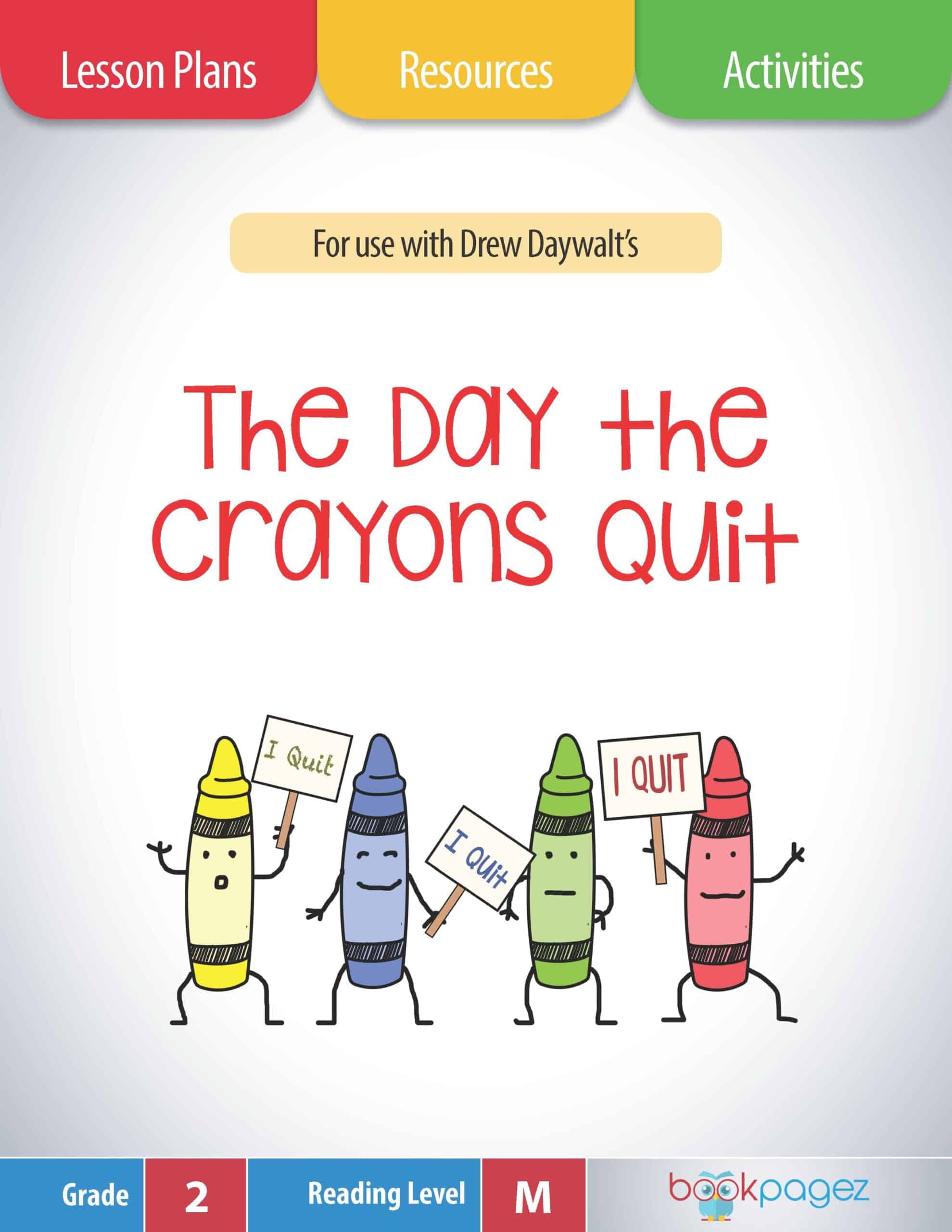
Second Grade Starter Set:
Lesson Plans, Activities, and Assessments for The Day the Crayons Quit by Drew Daywalt
Students will enjoy reading this highly entertaining book about a pack of disgruntled crayons. While reading a series of letters from each of the crayons students will be able to retell why Red is tired of only coloring fire engines and apples. They’ll work to understand the text structures the author uses to reveal why all of the other colors have complaints, and they’ll ask questions to comprehend how the main character comes up with a colorful solution to his problem with the crayons.
Asking Questions with The Day The Crayons Quit
This is a smart selection for readers who are working to ask questions to deepen their understanding. Readers will naturally wonder and pose questions about each crayon and the complaints they have about coloring.
Common Core Alignment:
2.13A 2.13C 2.13E 2.13G 2.1A 2.1C 2.1D 2.6A 2.6B 2.6E 2.6I 2.7B 2.7C 2.7D 2.7E 2.7F 2.8C
TEKS Alignment:
1.10E 1.13A 1.13D 1.13E 1.1A 1.1C 1.1D 1.6A 1.6E 1.6I 1.7A 1.7B 1.7C 1.7D 1.7E 1.7F 1.8B 1.8C
Identifying the Author's Purpose with The Day the Crayons Quit
The Day the Crayons Quit presents a dilemma-- This book and lesson plan are perfect for supporting advanced readers as they learn to determine for themselves what the author's message really is. Are the crayons reliable? Or does the author have another purpose in mind?
Common Core Alignment:
L.2.6 RF.2.3 RF.2.4 RL.2.10 RL.2.2 RL.2.3 RL.2.7 SL.2.1b SL.2.2 SL.2.3 W.2.8
TEKS Alignment:
2.10A 2.10B 2.10C 2.13C 2.13E 2.13G 2.1A 2.1C 2.1D 2.6A 2.6E 2.6I 2.7A 2.7B 2.7C 2.7D 2.7E 2.7F 2.8C 2.9C
Making Inferences with The Day the Crayons Quit
After yellow and orange complain of both being the colors of the sun (and have proof positive to support their argument), readers will have to make inferences about why Duncan uses the colors he does. Readers will practice inferring character emotions using text and pictures clues.
Common Core Alignment:
L.2.6 RF.2.3 RF.2.4 RL.2.10 RL.2.4 RL.2.7 SL.2.1b SL.2.2 SL.2.3 W.2.8
TEKS Alignment:
2.13C 2.13E 2.13G 2.1A 2.1C 2.1D 2.6A 2.6E 2.6F 2.6I 2.7B 2.7C 2.7D 2.7E 2.7F 2.8B 2.8C
Retelling and Summarizing with The Day the Crayons Quit
The "letters to Duncan" text structure in The Day the Crayons Quit is excellent practice for readers who are learning to retell and summarize more sophisticated texts. Readers need to distinguish the characters and their arguments to effectively retell and summarize.
Common Core Alignment:
L.2.6 RF.2.3 RF.2.4 RL.2.1 RL.2.10 RL.2.2 RL.2.3 RL.2.5 RL.2.7 SL.2.1b SL.2.2 SL.2.3 W.2.8
TEKS Alignment:
2.13C 2.13E 2.13G 2.1A 2.1C 2.1D 2.6A 2.6G 2.6I 2.7A 2.7B 2.7C 2.7D 2.7E 2.7F 2.8A 2.8C 2.8D 2.9C
Understanding Text Structure with The Day the Crayons Quit
The Day the Crayons Quit provides readers with an excellent opportunity to look at a persuasive text from each crayon's different point of view. Readers will see the problem within the structure of the set of letters written to Duncan and find a solution with the last drawing.
Common Core Alignment:
L.2.6 RF.2.3 RF.2.4 RL.2.10 RL.2.4 RL.2.5 RL.2.7 SL.2.1b SL.2.2 SL.2.3 W.2.8
TEKS Alignment:
2.10B 2.10C 2.13C 2.13E 2.13G 2.1A 2.1C 2.1D 2.6A 2.6I 2.7B 2.7C 2.7D 2.7E 2.7F 2.8C 2.9C
Phonics and Word Work Resources for The Day the Crayons Quit
This word work lesson plan and set of teaching resources use The Day the Crayons Quit by Drew Daywalt as a springboard for instruction focused on parts of speech.
By anchoring word study to the text, students will benefit from seeing how adjectives and adverbs are used inside of the text before engaging in both guided and independent practice with parts of speech.
By anchoring word study to the text, students will benefit from seeing how adjectives and adverbs are used inside of the text before engaging in both guided and independent practice with parts of speech.
Common Core Alignment:
RF.2.3 RF.2.4
TEKS Alignment:
2.2B(i) 2.2B(iii) 2.2B(v) 2.2C(i) 2.2C(iv) 2.2C(v)
Vocabulary Resources for The Day the Crayons Quit
This set of vocabulary development resources for The Day the Crayons Quit highlights the words that are most important for students to know and understand while reading the book.
Through engaging in fun word games, matching words to definitions and pictures, and practicing how to categorize words, students will develop the vocabulary necessary to comprehend this story and many others.
Through engaging in fun word games, matching words to definitions and pictures, and practicing how to categorize words, students will develop the vocabulary necessary to comprehend this story and many others.
Common Core Alignment:
L.2.4a L.2.5a L.2.6
TEKS Alignment:
2.3A 2.3B 2.3D 2.7E 2.7F

Spanish Language Resources for The Day the Crayons Quit
The following PDF resoruces are available in Spanish.
Third Grade Starter Set:
Lesson Plans, Activities, and Assessments for Sylvester and the Magic Pebble by William Steig
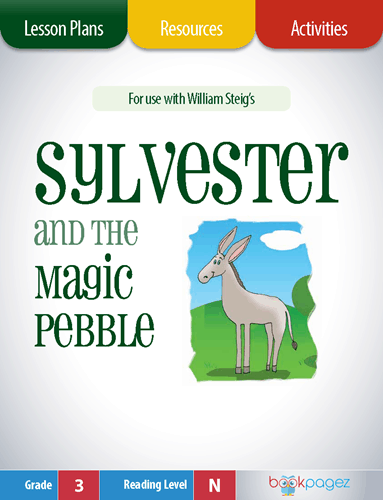
Third Grade Starter Set:
Lesson Plans, Activities, and Assessments for Sylvester and the Magic Pebble by William Steig
Sylvester is a young burro who enjoys collecting unusual pebbles. One rainy day, he finds a magic pebble that can make wishes come true. Sylvester wishes many wishes, but one wish has unexpected consequences for Sylvester. This story is an excellent anchor text for teaching several comprehension strategies, including retelling and summarizing, making predictions, and determining importance.
Determining Importance with Sylvester and the Magic Pebble
The level of detail present in this story makes it a good choice for readers who are learning to determine importance. Students will need to decide which events and details are most important to remember in order to retell and identify the author's purpose.
Common Core Alignment:
L.3.6 RF.3.3 RF.3.4 RL.3.10 RL.3.2 RL.3.5 RL.3.6 RL.3.7 SL.3.1d SL.3.2 SL.3.3 W.3.8
TEKS Alignment:
3.10A 3.13C 3.13E 3.13H 3.1A 3.1C 3.1D 3.1E 3.6A 3.6B 3.6E 3.6G 3.6I 3.7A 3.7B 3.7C 3.7D 3.7E 3.7F 3.7G 3.8C
Identifying the Author's Purpose with Sylvester and the Magic Pebble
This book is a smart choice for readers who are learning to identify the author's purpose. As the story unfolds, readers will need to apply clues from the text to uncover messages about being careful what you wish for and about the far-reaching impact your actions can have on other people.
Common Core Alignment:
L.3.6 RF.3.3 RF.3.4 RL.3.10 RL.3.2 RL.3.6 SL.3.1d SL.3.2 SL.3.3 W.3.8
TEKS Alignment:
3.10A 3.10B 3.10C 3.10D 3.10F 3.13C 3.13E 3.13H 3.1A 3.1C 3.1D 3.1E 3.6A 3.6B 3.6I 3.7A 3.7B 3.7C 3.7D 3.7E 3.7F 3.7G 3.8C
Making Predictions with Sylvester and the Magic Pebble
This book is perfect for supporting a lesson on retelling. Sylvester and the Magic Pebble has a very clear sequence of events and a limited cast of characters. Therefore, readers can focus on identifying the key events and supporting details to construct an accurate summary of this story.
Common Core Alignment:
L.3.6 RF.3.3 RF.3.4 RL.3.1 RL.3.10 RL.3.3 SL.3.1d SL.3.2 SL.3.3 W.3.8
TEKS Alignment:
3.13C 3.13E 3.13H 3.1A 3.1C 3.1D 3.1E 3.6A 3.6B 3.6C 3.6I 3.7A 3.7B 3.7C 3.7D 3.7E 3.7F 3.7G 3.8C
Retelling and Summarizing with Sylvester and the Magic Pebble
The "letters to Duncan" text structure in The Day the Crayons Quit is excellent practice for readers who are learning to retell and summarize more sophisticated texts. Readers need to distinguish the characters and their arguments to effectively retell and summarize.
Common Core Alignment:
L.3.6 RF.3.3 RF.3.4 RL.3.1 RL.3.10 RL.3.4 RL.3.7 SL.3.1d SL.3.2 SL.3.3 W.3.8
TEKS Alignment:
3.13C 3.13E 3.13H 3.1A 3.1C 3.1D 3.1E 3.6A 3.6G 3.6I 3.7B 3.7C 3.7D 3.7E 3.7F 3.7G 3.8B 3.8C 3.8D
Synthesizing with Sylvester and the Magic Pebble
This book and lesson plan are helpful resources for introducing students to the idea of synthesizing in order to fully comprehend a text. Sylvester and the Magic Pebble presents readers with rich detail, several opportunities to identify cause and effect, and multiple meaningful messages. This will require readers to identify and apply a variety of comprehension strategies to fully appreciate this story.
Common Core Alignment:
RF.3.3 RF.3.4 RL.3.1 RL.3.10 RL.3.2 RL.3.3 RL.3.4 RL.3.5 RL.3.6 RL.3.7 SL.3.1c SL.3.1d SL.3.2 SL.3.3 W.3.8
TEKS Alignment:
3.13C 3.13E 3.13H 3.1A 3.1C 3.1D 3.1E 3.6A 3.6G 3.6H 3.6I 3.7B 3.7C 3.7D 3.7E 3.7F 3.7G 3.8C 3.8D
Visualizing with Sylvester and the Magic Pebble
The author of Sylvester and the Magic Pebble uses engaging, descriptive language, and the illustrator provides images that are based closely on the text. This is ideal for readers who are learning how visualizing can enhance their comprehension of a story.
Common Core Alignment:
3.10C 3.13C 3.13E 3.13H 3.1A 3.1C 3.1D 3.1E 3.6A 3.6D 3.6E 3.6I 3.7A 3.7B 3.7C 3.7E 3.7F
TEKS Alignment:
3.10C 3.13C 3.13E 3.13H 3.1A 3.1C 3.1D 3.1E 3.6A 3.6D 3.6E 3.6I 3.7A 3.7B 3.7C 3.7E 3.7F
Phonics and Word Work Resources for Sylvester and the Magic Pebble
This word work lesson plan and set of teaching resources use Sylvester and the Magic Pebble by William Steig as a springboard for instruction focused on syllables.
By anchoring word study to the text, students will benefit from seeing how three-syllable words are used inside of the text before engaging in both guided and independent practice with syllables.
By anchoring word study to the text, students will benefit from seeing how three-syllable words are used inside of the text before engaging in both guided and independent practice with syllables.
Common Core Alignment:
RF.3.3 RF.3.4
TEKS Alignment:
3.2A(i) 3.2A(ii) 3.2A(iii) 3.2B(i) 3.2B(iv) 3.2B(v)
Vocabulary Resources for Sylvester and the Magic Pebble
This set of vocabulary development resources for Sylvester and the Magic Pebble highlights the words that are most important for students to know and understand while reading the book.
Through engaging in fun word games, matching words to definitions and pictures, and practicing how to categorize words, students will develop the vocabulary necessary to comprehend this story and many others.
Through engaging in fun word games, matching words to definitions and pictures, and practicing how to categorize words, students will develop the vocabulary necessary to comprehend this story and many others.
Common Core Alignment:
L.3.4a L.3.5b L.3.6
TEKS Alignment:
3.3A 3.3B 3.7E 3.7F
Cause and Effect Matching Game for Sylvester and the Magic Pebble
Read Sylvester and the Magic Pebble then have some fun matching cause and effect sentences from the book. By using these cause and effect cards, students will demonstrate both their comprehension of the text and their understanding of cause and effect relationships in hands-on and interactive way.
This resource includes matching/sorting cards and a sorting mat for four cause and effect sentences in Sylvester and the Magic Pebble. Each cause card is marked with a square and each effect card is marked with a circle, making it easy to support students who struggle with matching cause and effect relationships.
This resource includes matching/sorting cards and a sorting mat for four cause and effect sentences in Sylvester and the Magic Pebble. Each cause card is marked with a square and each effect card is marked with a circle, making it easy to support students who struggle with matching cause and effect relationships.
Cause and Effect Question Stems for Sylvester and the Magic Pebble
Understanding cause and effect is a key comprehension and language skill. The text structure of Sylvester and the Magic Pebble includes several examples of cause and effect relationships, making it easy to use as a springboard for modeling or independent practice.
This simple resource includes four sentence stems. Each sentence stem presents an effect. Students will use what they know about the book to fill in the cause of the effect.
This simple resource includes four sentence stems. Each sentence stem presents an effect. Students will use what they know about the book to fill in the cause of the effect.

Spanish Language Resources for Sylvester and the Magic Pebble
The following PDF resoruces are available in Spanish.
Fourth Grade Starter Set:
Lesson Plans, Activities, and Assessments for Sunken Treasure by Gail Gibbons
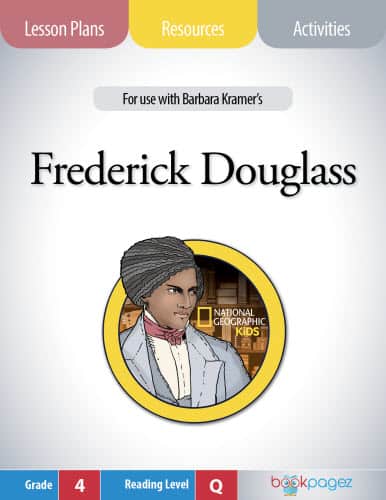
Fourth Grade Starter Set:
Lesson Plans, Activities, and Assessments for Frederick Douglass by Barbara Kramer
Born into slavery, Frederick Douglass's future was influenced early by his master's wife's controversial decision to begin teaching him to read. Use Barbara Kramer's fact-filled biography to share the important ways that Douglass use both printed and spoken words in his fight to end slavery and to create a better life for the freed slaves.
Teach students to comprehend using the features of nonfiction text to retell the important contributions Douglass made, make connections to the time period he lived in, visualize what life might have been like for Douglass, and determine which details are most important to remember.
Teach students to comprehend using the features of nonfiction text to retell the important contributions Douglass made, make connections to the time period he lived in, visualize what life might have been like for Douglass, and determine which details are most important to remember.
Determining Importance with Frederick Douglass
This book and lesson plan are ideal for readers who are working to advance their comprehension by asking questions while reading. The world described in this nonfiction book will likely be new to your students, so readers will naturally ask questions to help them dig deeper into the topic of this text.
Common Core Alignment:
L.4.6 RF.4.3 RF.4.4 RI.4.1 RI.4.10 RI.4.2 RI.4.7 RI.4.8 SL.4.1c SL.4.1d SL.4.2 W.4.8 W.4.9
TEKS Alignment:
4.10A 4.13C 4.13E 4.13H 4.1A 4.1C 4.6A 4.6B 4.6E 4.6G 4.6H 4.6I 4.7A 4.7B 4.7C 4.7D 4.7E 4.7F 4.7G 4.9D(i) 4.9D(ii) 4.9D(iii)
Making Connections with Frederick Douglass
Improve students' comprehension of Barbara Kramer's Frederick Douglass by showing them how to make connections to his life. Thinking about other historical figures who worked to help others, what they already know about the Underground Railroad and Abraham Lincoln, and what it is like to make a hard decision all support their understanding of the new information presented in this text.
Common Core Alignment:
L.4.6 RF.4.3 RF.4.4 RI.4.1 RI.4.10 RI.4.3 RL.4.2 SL.4.1c SL.4.1d SL.4.2 W.4.8 W.4.9
TEKS Alignment:
4.13C 4.13E 4.13H 4.1A 4.1C 4.6A 4.6B 4.6E 4.6I 4.7A 4.7B 4.7C 4.7D 4.7E 4.7F 4.7G 4.9D(i) 4.9D(ii) 4.9D(iii)
Retelling and Summarizing with Frederick Douglass
Retelling and summarizing nonfiction texts like Frederick Douglass by Barbara Kramer is an essential skill for reading comprehension. Students will be able to use the photographs, captions, and highlighted vocabulary words to identify and remember the important facts from the text.
Common Core Alignment:
L.4.6 RF.4.3 RF.4.4 RI.4.10 RI.4.2 RI.4.3 RI.4.8 SL.4.1c SL.4.1d SL.4.2 W.4.8 W.4.9
TEKS Alignment:
4.13C 4.13E 4.13H 4.1A 4.1C 4.6A 4.6B 4.6G 4.6H 4.6I 4.7A 4.7B 4.7C 4.7D 4.7E 4.7F 4.7G 4.8A 4.9D(i) 4.9D(ii) 4.9D(iii)
Understanding Text Structure with Frederick Douglass
Author Barbara Kramer incorporated a variety of text structures when writing Frederick Douglass's biography. Use this focused mini lesson to teach students how to identify and use a text's organization to improve their understanding of the information being presented.
Common Core Alignment:
L.4.6 RF.4.3 RI.4.1 RI.4.10 RI.4.5 RI.4.7 SL.4.1c SL.4.1d SL.4.2 W.4.8 W.4.9
TEKS Alignment:
4.10B 4.10C 4.13C 4.13E 4.13H 4.1A 4.1C 4.6A 4.6B 4.6I 4.7B 4.7C 4.7D 4.7E 4.7F 4.7G 4.8A 4.9D(i) 4.9D(ii) 4.9D(iii) 4.9F
Visualizing with Frederick Douglass
When students create mental images while reading Frederick Douglass, they are using author Barbara Kramer's words to help them bridge the gap between the new information being presented and what they already know. Use this visualizing mini lesson to teach students how to check their thinking using the newspaper clippings, paintings, and illustrations.
Common Core Alignment:
L.4.6 RF.4.3 RF.4.4 RI.4.1 RI.4.10 RI.4.7 SL.4.1c SL.4.1d SL.4.2 W.4.8 W.4.9
TEKS Alignment:
4.10C 4.13C 4.13E 4.13H 4.1A 4.1C 4.6A 4.6B 4.6D 4.6E 4.6I 4.7A 4.7B 4.7C 4.7E 4.7F 4.9D(i) 4.9D(ii) 4.9D(iii)
Phonics and Word Work Resources for Frederick Douglas
This word work lesson plan and set of teaching resources use Frederick Douglass by Barbara Kramer as a springboard for instruction focused on suffixes.
By anchoring word study to the text, students will benefit from seeing how suffixes are used inside of the text before engaging in both guided and independent practice with words.
By anchoring word study to the text, students will benefit from seeing how suffixes are used inside of the text before engaging in both guided and independent practice with words.
Common Core Alignment:
RF.4.3 RF.4.4
TEKS Alignment:
4.2A(v) 4.2B(vi)
Vocabulary Resources for Frederick Douglass
This set of vocabulary development resources for Frederick Douglass highlights the words that are most important for students to know and understand while reading the book.
Through engaging in fun word games, matching words to definitions and pictures, and practicing how to categorize words, students will develop the vocabulary necessary to comprehend this story and many others.
Through engaging in fun word games, matching words to definitions and pictures, and practicing how to categorize words, students will develop the vocabulary necessary to comprehend this story and many others.
Common Core Alignment:
L.4.4a L.4.5c L.4.6
TEKS Alignment:
4.3A 4.3B 4.7E 4.7F

Spanish Language Resources for Sunken Treasure
The following PDF resoruces are available in Spanish.
Fifth Grade Starter Set:
Lesson Plans, Activities, and Assessments for The BFG by Roald Dahl
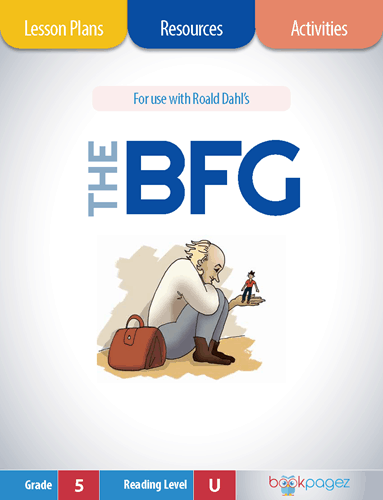
Fifth Grade Starter Set:
Lesson Plans, Activities, and Assessments for The BFG by Roald Dahl
Use The BFG by Roald Dahl to turn your read aloud or small group work into a time to improve comprehension and talk about the text in purposeful ways.
Roald Dahl's classic, The BFG, tells the story of an orphan named Sophie who has been kidnapped by a giant. Luckily for Sophie, the giant is a BFG. He is not like other giants who delight in eating human beings. This giant is a Big Friendly Giant who has a unique way with words. Students will delight in Sophie and the BFG's story while learning about figurative language and the ways authors use words to bring stories to life.
Roald Dahl's classic, The BFG, tells the story of an orphan named Sophie who has been kidnapped by a giant. Luckily for Sophie, the giant is a BFG. He is not like other giants who delight in eating human beings. This giant is a Big Friendly Giant who has a unique way with words. Students will delight in Sophie and the BFG's story while learning about figurative language and the ways authors use words to bring stories to life.
Book Club Instructional Overview for The BFG
This is a smart selection for readers who are working to ask questions to deepen their understanding. Readers will naturally wonder and pose questions about each crayon and the complaints they have about coloring
Common Core Alignment:
L.5.6 RF.5.3 RF.5.4 RL.5.1 RL.5.10 RL.5.2 RL.5.3 RL.5.4 RL.5.5 RL.5.6 RL.5.7 RL.5.9 SL.5.1a SL.5.1b SL.5.1c SL.5.1d SL.5.2 SL.5.3 W.5.8 W.5.9
TEKS Alignment:
5.10D 5.10G 5.13A 5.13C 5.13E 5.13H 5.1A 5.1C 5.1D 5.6A 5.6B 5.6C 5.6D 5.6E 5.6F 5.6G 5.6H 5.6I 5.7A 5.7B 5.7C 5.7D 5.7E 5.7F 5.7G
Book Club Management Resources for The BFG
The Day the Crayons Quit presents a dilemma-- This book and lesson plan are perfect for supporting advanced readers as they learn to determine for themselves what the author's message really is. Are the crayons reliable? Or does the author have another purpose in mind?
The BFG Book Club Meeting 2
MEETING FOCUS: METAPHORS AND SIMILES
The BFG is a perfect text to use to practice identifying different types of figurative language. This Book Club meeting introduces students to metaphors and similes in the text and provides a system for tracking figurative language as they read.
The BFG is a perfect text to use to practice identifying different types of figurative language. This Book Club meeting introduces students to metaphors and similes in the text and provides a system for tracking figurative language as they read.
The BFG Book Club Meeting 3
MEETING FOCUS: PERSONIFICATION
Another type of figurative language that author Roald Dahl used in The BFG is personification. During this meeting, students will understand how the author used personification to give nonhuman objects human characteristics in order to help his readers create strong mental images.
Another type of figurative language that author Roald Dahl used in The BFG is personification. During this meeting, students will understand how the author used personification to give nonhuman objects human characteristics in order to help his readers create strong mental images.
The BFG Book Club Meeting 4
MEETING FOCUS: ONOMATOPOEIAS
Students will enjoy hunting for the many examples of onomatopoeia Roald Dahl included in The BFG. Group discussion focuses on words that are pronounced the way they are written and why readers can easily understand nonsensical words in the text.
Students will enjoy hunting for the many examples of onomatopoeia Roald Dahl included in The BFG. Group discussion focuses on words that are pronounced the way they are written and why readers can easily understand nonsensical words in the text.
The BFG Book Club Meeting 6
MEETING FOCUS: HYPERBOLES
Roald Dahl provides many examples of hyperbole in The BFG. Students will identify this type of figurative language and discuss how using exaggeration in writing helps to create strong mental images for readers.
Roald Dahl provides many examples of hyperbole in The BFG. Students will identify this type of figurative language and discuss how using exaggeration in writing helps to create strong mental images for readers.
Common Core Alignment:
L.2.4a L.2.5a L.2.6
TEKS Alignment:
2.3A 2.3B 2.3D 2.7E 2.7F
Vocabulary Resources for The BFG
This set of vocabulary development resources for The BFG highlights the words that are most important for students to know and understand while reading the book.
Through engaging in fun word games, matching words to definitions and pictures, and practicing how to categorize words, students will develop the vocabulary necessary to comprehend this story and many others.
Through engaging in fun word games, matching words to definitions and pictures, and practicing how to categorize words, students will develop the vocabulary necessary to comprehend this story and many others.
Common Core Alignment:
L.5.4a L.5.5 L.5.6
TEKS Alignment:
5.3A 5.3B 5.7E 5.7F

Spanish Language Resources for The BFG
The following PDF resoruces are available in Spanish.
Synthesizing Lesson Plan and Resources for Arnie the Doughnut by Laurie Keller
MODEL HOW READERS CAN USE A VARIETY OF STRATEGIES TO DEEPEN THIER COMPREHENSION OF THIS LAUGH-OUT-LOUD STORY
This is the story of a wacky doughnut who is everything he ever wanted to be; chocolate-covered with sprinkles. Arnie is delighted to live in the bakery where he tries to make friends with the other doughnuts. Life is wonderful until Arnie discovers that doughnuts are something that people eat. Soon, he is fighting for his life, doing everything he can to avoid being eaten.
While Arnie's story is highly entertaining, it's also rather complicated.
Use this free lesson plan to teach readers how to pay attention to their thinking as they read in order to better understand Arnie and Mr. Bing's differing perspectives on their strange situation.
Your Free Resource Includes:
This is the story of a wacky doughnut who is everything he ever wanted to be; chocolate-covered with sprinkles. Arnie is delighted to live in the bakery where he tries to make friends with the other doughnuts. Life is wonderful until Arnie discovers that doughnuts are something that people eat. Soon, he is fighting for his life, doing everything he can to avoid being eaten.
While Arnie's story is highly entertaining, it's also rather complicated.
Use this free lesson plan to teach readers how to pay attention to their thinking as they read in order to better understand Arnie and Mr. Bing's differing perspectives on their strange situation.
Your Free Resource Includes:
- Synthesizing Lesson Plan
- Student Practice Pages
- Reader's Notebook Prompt
- Graphic Organizer
- Standards Alignment
SAVE 50% ON A FULL YEAR OF BOOKPAGEZ
Join today and get all the resources for Arnie the Doughnut plus thousands more!
BookPagez members get this synthesizinglesson for Arnie the Doughnut plus so much more including:
- Comprehension lesson plans nearly 300 books
- Word Work and phonics lesson plans
- Vocabulary development resources
- Assessments
- Cause and effect activities
- Fun extension activites
- Classroom resources, posters, games
- Full access to Digital Classroom
Friendship, Flowers, and Heart Shaped Notes
A couple of sweet stories, one cautionary tale, and lots of fun resource sets are all you need to keep your students reading on Valentine’s Day.
A couple of sweet stories, one cautionary tale, and lots of fun resource sets are all you need to keep your students reading on Valentine’s Day.
Roses are Pink, Your Feet Really Stink by Diane deGroat
It's Valentine's Day, and Gilbert must make a nice Valentine for everyone in his class. But, two of Gilbert's classmates tease him, so he decides to play a little Valentine's prank. Students will connect with this entertaining story while also practicing retelling and summarizing, and making inferences.
Try the he Cause and Effect resoruces or silly Valentine writing activty during your centers to keep kids reading and engaged on Valentine's Day.
Try the he Cause and Effect resoruces or silly Valentine writing activty during your centers to keep kids reading and engaged on Valentine's Day.
Somebody Loves You, Mr. Hatch by Eileen Spinelli
Mr. Hatch never smiles. He follows the same boring routine every day, and he does it alone. One morning, a sweet surprise compels Mr. Hatch to notice the world around him. Mr. Hatch starts to make friends and help his neighbors. Children will look closely at the change in Mr. Hatch by noticing the text structure and considering the author's purpose for writing the book. They will appreciate the richly detailed illustrations as they retell and summarize the story. Will they notice the mouse that appears on many of the pages? Discover more surprises while reading this important book about kindness.
Turn your classroom library into a Valentine treasure hunt with the worksheet included in this resource set. Students will love hiding friendly messages for thier friends inside the pages of thier favorite books.
Turn your classroom library into a Valentine treasure hunt with the worksheet included in this resource set. Students will love hiding friendly messages for thier friends inside the pages of thier favorite books.
The Day it Rained Hearts by Felicia Bond
Cornelia Augusta can't believe her luck when it starts raining hearts! Knowing that it must be close to Valentine's Day, she sets to work using the hearts she collected to make the perfect Valentine for each of her friends. This sweet tale of friendship is an ideal seasonal anchor text for students learning to ask questions, determine importance, identify the author's purpose, and make inferences and predictions.
And, if you're working on digraphs, this resoruce set includes a lesson plan and set of resources focused on -ai and -ay digraphs.
And, if you're working on digraphs, this resoruce set includes a lesson plan and set of resources focused on -ai and -ay digraphs.
Get Ready for Black History Month
Help students learn about the struggles African Americans have overcome and celebrate the people and events that make Black History so inspiring with these read alouds and paired resource sets.
Help students learn about the struggles African Americans have overcome and celebrate the people and events that make Black History so inspiring with these read alouds and paired resource sets.
Bud, Not Buddy by Christopher Paul Curtis
Use Bud, Not Buddy by Christopher Paul Curtis to turn your read aloud or small group work into a time to improve comprehension and talk about the text in purposeful ways.
Set during The Great Depression, Bud, Not Buddy, tells the story of a 10-year-old boy on a mission to meet his father. Students will quickly become engaged with this award-winning novel and will benefit from studying how Christopher Paul Curtis used a variety of text structures to tell Bud's story.
Set during The Great Depression, Bud, Not Buddy, tells the story of a 10-year-old boy on a mission to meet his father. Students will quickly become engaged with this award-winning novel and will benefit from studying how Christopher Paul Curtis used a variety of text structures to tell Bud's story.
Henry's Freedom Box: A True Story from the Underground Railroad by Ellen Levine
Henry's Freedom Box is the emotional story of a boy born into slavery and his unconventional escape to freedom. Henry does not know his birthday, he is torn apart from his family, and in desperation, he sets out on a brave quest for freedom. For readers who have some knowledge of this time in history, this is an excellent selection for teaching more advanced strategies, such as asking questions, identifying the author's purpose, and synthesizing.
This resource set also includes a lesson plan and student activities focused on inflectional endings along with a comprehension assessment, and three cause and effect activites to help students better understand the story shared in this inspiring book.
This resource set also includes a lesson plan and student activities focused on inflectional endings along with a comprehension assessment, and three cause and effect activites to help students better understand the story shared in this inspiring book.
Making Predictions with Trombone Shorty by Troy Andrews
Children will make an immediate connection with Trombone Shorty's autobiography. As a young boy, Troy Trombone Shorty" Andrews spent his time like most children do, playing with friends and family. But unlike many children, he always had a trombone in his hand.
Teach your students to use what they know about determination and peole with a growth mindset to make predictions as they engage with this inspiring story.
Teach your students to use what they know about determination and peole with a growth mindset to make predictions as they engage with this inspiring story.
EXCLUSIVE SAVINGS FOR Free Sample Club Members
Save an extra 10% on your monthly or annual subscription
7 Day Risk-Free Guarantee, Cancel Anytime

Here's what you'll get when you become a member:
- Instant access to lesson plans, activities, and assessments for 275+ books (with more added each month!)
- Access to classroom resources including posters, games, and any time activities for whole group, small group, and centers
- Full access to Digital Classroom
- Weekly emails with resource suggestions and tips for getting the most out of your subscription
- Try BookPagez for 7 days, if you're not happy we'll gladly issue you a refund
- Free Sample Club savings for as long as your monthly or annual subscription is active!
BEST VALUE
Save over 50%! (Reg. $72 per year)
$36/year Now $32.40
- Lock in your savings - your rate will never go up!
- Get access to all PDF and digital resources
- 7 day risk free guarantee**
- Cancel anytime
*This plan is scheduled to automatically renew every 12 months. You can manage your subscription preferences in your dashboard.
**Refund Policy
**Refund Policy
$9/month Now $8.10
- Most flexible plan
- Get access to all PDF and digital resources
- 7 day risk free guarantee**
- Cancel anytime
*This plan is scheduled to automatically renew every month. You can manage your subscription preferences in your dashboard.
**Refund Policy
**Refund Policy


